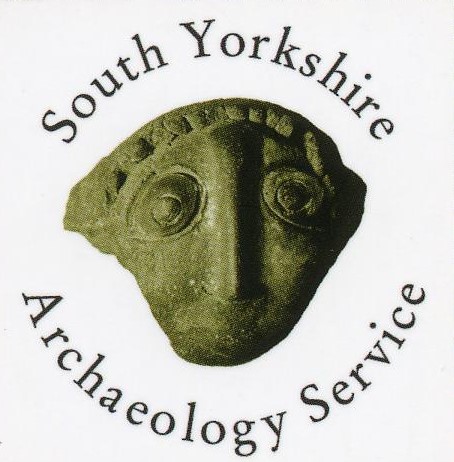Highfield Cocoa and Coffee House
Location/Address
136-138 London Road, Sheffield, S2 4NH
Type
Description
• The building at 136-138 London Road was constructed in 1877 as the Highfield Cocoa and Coffee House, to designs by M. E. Hadfield & Son for Frederick Thorpe Mappin. It was the first such establishment in Sheffield, and contained reading rooms, a billiard room and had a skittle alley at the back. By 1901 it was one of several establishments operated by the Sheffield Café Company. The Cocoa and Coffee House closed in 1908.
• In 1909 George Barlow & Sons, shopfitters, took over the building, with the shop being occupied by Fred Dover, confectioner, by 1911 and probably at the same time as the Barlow's move. The confectionery business then became part of Hibbert's, and continued until mid-century, when No. 138 is listed as Barlow's. The building then remained in use as a showroom and offices for Barlow's shopfitters until at least 2008.
• The building retains its original moulded terracotta and well-detailed semi-circular arched windows. The tile cladding to the ground floor and alterations to the ground floor windows and door took place in the 1950s; the seven sculpted concrete frieze panels (by an unknown artist) were added above the ground floor windows during remodelling in 1967.
Statement of Significance
Asset type
BuildingAge
Built 1877. Ground floor frontage remodelled in the 1950s and frieze panels added in 1967.Rarity
Purpose-built cocoa and coffee house - fewer than two dozen such establishments were ever listed in local trade directories, and no others have so far been positively identified as built for the purpose.Architectural and Artistic Interest
Designed by M. E. Hadfield & Son, one of the leading Sheffield architectural practices of the day - brick built in an attractive Italianate style, with stone and terracotta dressings and a hipped slate roof with end stacks. The terracotta architrave is decorated with hexagonal florets. Closely space arched windows on the first floor provided for a well-lit interior. The mid-20th century mosaic oblong tiling in varying shades of grey that clads the ground floor is complemented by the much darker grey of the added panels. The artist for these is so far unknown. These panels are a near contemporary of Bill Mitchell's 1972 frieze for Barkers Pool House, which was made of the novel material Faircrete - a material that could be worked with sculptor's tools while still wet. The Highfield panels may well be of this or a similar material. The panel design is abstract, and includes a hexagonal rosette motif that closely resembles the distinctive design of the original terracotta moulding. There are also 3 stylised cocoa pods, linking the later artwork with the building's original purpose. Other parts of the design are open to interpretation, but appear inspired by industrial and mechanical processes. There are also areas with a texture similar to crozzle, a by-product of both blade grinding and the cementation steel process, a material particular to Sheffield.Group Value
Nos. 136-138 lie at the meeting of the parts of Sheffield traditionally called Little Sheffield and Highfield, and forms part of the largely 19th century ribbon development along London Road, which developed as the town expanded. There were a number of public houses along the road, which the Cocoa & Coffee House was built as a response to. The adjacent Tramway Hotel has been demolished but the Barrell Inn and the Crown Inn, opposite, are still standing.Historic Interest
The Cocoa House and Coffee House movement emerged in the last quarter of the 19th century, inspired by the temperance movement. The intention was to provide an alternative to the public house, serving non-alcoholic refreshment while providing recreational attractions. They were also intended to be family-friendly. The late 19th century coffee houses aimed at workers and their families should be distinguished from the 18th century version, which were far more patronised by the well-to-do and were not esteemed by temperance campaigners as they saw them as encouraging men to be absent from home. Dr Barnardo opened London's first "coffee palace" in 1873. Robert Lockhart formed the British Workmen’s Public Houses company in Liverpool in 1875, and although slow to start eventually built a chain of 60 houses in London alone. The Leicester Coffee and Cocoa House Company was formed in 1877. The Highfield house, also of 1877, can therefore be seen to date from the early days of the movement's expansion. It was the first in Sheffield; in the same year the Sheffield Café Company was formed, which by 1881 had 11 establishments. The movement was more prominent in some towns than in Sheffield, perhaps because traditional public houses were well established as essential to hot, dusty local industries, and already offered facilities similar to those at Highfield, including meeting rooms often used by workers' organisations. The Highfield Coffee & Cocoa House was the initiative of one of the town's more important benefactors, Frederick T. Mappin, who also significantly contributed to the founding of the Technical School and University. Mappin paid for the land as well as the construction of the building and considered the project of sufficient importance to engage leading local architects.Archaeological Interest
It is not known what potential exists for below ground remains. The interior of the building has been altered but there is some potential for survival of evidence for its earlier use.Landmark Status
The building is prominently located on a bend, making it a highly visible landmark when approached from either direction. Its distinctive high-quality 19th century architecture, as well as the 20th century additions, make it immediately recognisable as one of a small number of similarly distinguished buildings on this important route.Date Listed
18 Sep 2023
Last Updated
09 Jun 2023
Comments and Feedback
Do you have any questions or more information about this record?







